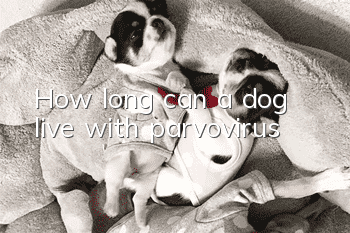How to judge bone lesions based on X-ray signs

Because bones contain a large amount of calcium salts and phosphates, they are relatively dense tissues in the animal body and have a sharp natural contrast with surrounding tissues. Therefore, bone lesions can be well visualized by X-rays. This article mainly describes the basic x-ray manifestations of bone lesions, rather than focusing on the disease itself. It aims to suggest diagnostic ideas and methods for diagnosing bone diseases using X-ray films.
1. Changes in bone density
1.1 Decreased bone density: Trauma, disuse, metabolic disorders, infection or tumors can lead to bone absorption or destruction. When a portion of bone tissue is destroyed, the imaging density of that area decreases. This is evident in a case of localized bone injury due to contrast with surrounding normal bone. The trabecular structure becomes blurred or coarse, and some degree of fusion is lost. The decrease in bone density can occur in a specific bone, or in a certain part of the bone, or it can be widespread in the entire spine. Decreased density of cortical bone is more common than decreased density of bone marrow. When bone tissue in a certain area loses 50% of its minerals, imaging changes will be obvious.
Osteopenia causes a decrease in bone density, which generally occurs in two forms: osteoporosis and osteomalacia. Osteoporosis not only causes loss of bone salt, but also decreases bone tissue. When osteomalacia occurs, the amount of bone tissue is not reduced, but bone salt is lost. Radiologically, the two are difficult to distinguish. Overexposure is not conducive to the diagnosis of osteopenia, so appropriate exposure conditions during X-ray photography are important for the diagnosis of this disease.
Osteolysis is mostly caused by bone destruction causing local decrease in bone density. According to the type of damage, it is divided into the following three categories: localized type, or localized type; encroaching type; diffuse type. Localized osteolysis shows regular shape, clear boundaries, with or without bone cortical expansion, and is mostly benign diseases, such as bone cysts. Nibbling osteolysis often presents with multiple small osteolysis foci with unclear edges and large invasion zones. This type has or without cortical bone erosion and is mostly related to malignant tumors or infections. In diffuse osteolysis, the bone cortex is eroded, and inconspicuous punctate dissolution lesions appear in the bone. This type is the most serious disease and is common in malignant tumors or severe uncontrollable osteomyelitis.
1.2 Increased bone density: Increased bone salt deposition or bone hyperplasia in bone tissue increases the X-ray density of bone tissue. Increased bone density may be caused by lesions in the bone itself, or may be related to damage or pressure outside the bone. Continuous pressure causes the bone cortex to thicken along the stress line. Increased bone density on imaging is usually called osteosclerosis. As a self-defense mechanism, sclerotic zones are often located around the focus of infection. Subarticular cartilage sclerosis may be related to inflammatory lesions of the joints. During X-ray photography, the overlapping or superposition of bones will also cause the density of the image to increase.
In addition, growth retardation caused by any reason, such as shortened growth cycle, will cause the vertebrae to form high-density growth retardation lines. This kind of situationThere are no clinical symptoms.
2. Periosteal reaction
Periosteum hyperplasia may occur during the process of new bone formation. This type of periosteal hyperplasia is often caused by severe injury. In the early stage, a very regular periosteal reaction zone appears around the bone lesion, making the edge of the injury area clear or unclear. There are many types of periosteal reactions that can be seen.
Homogeneous smooth type: more common in mild injuries, subperiosteal hematoma or bone reconstruction process. It reflects a chronic pathological process.
Layer type or "onion type": mostly caused by epiosseous membrane hyperplasia. New bone is deposited layer by layer in parallel on the bone cortex. Metaphyseal osteophytes commonly seen in puppies (hypertrophic osteodystrophy).
Fence type reaction/lace type: the new bone formed is distributed at a certain angle along the backbone cortex. The new bones are firmly connected together. Common in hypertrophic bone disease and certain osteomyelitis.
Acupuncture type/radiation type: The new bone formed radiates from the bone damage focus. This type indicates aggressive disease and is common in malignant bone tumors. Some severe forms of these reactions are sometimes called radiation-type periosteal reactions.
Irregular type: The edges of the new bone in the soft tissue adjacent to the bone injury are irregular and the position is not fixed. Common in cachexia.
Codman's triangle (Codman's triangle): When this type occurs, the formed periosteal new bone is re-destroyed, and the residual periosteal reaction at both ends of the destruction area is triangular. Common in benign or malignant osteomyelitis.
Periosteal reaction can be seen on X-rays 7 to 10 days after bone injury, and appears earlier in young dogs than in adult dogs. It is unscientific to estimate the time of bone injury solely through X-ray signs. It is generally believed that irregular or soft-tissue erosive periosteal reactions indicate erosive lesions, while early bone damage is often accompanied by smooth, uniform, and regular periosteal reactions.
3. Morphological changes
Under pathological conditions, especially during the growth phase, the size or contour of bones may change. Premature closure of the epiphyses in young dogs may result in shortened bones. Shortened bones may affect adjacent bones, causing deformities in the corresponding joints. Poor blood supply during fracture healing may also cause the bone to deform after healing, but it may maintain a certain density.
"Abduction" means the bone is angled away from the midline of the body, while "varus" means the bone is angled closer to the midline.
IV. Changes in trabecular bone structure
In the medullary cavity images, you can see the fine reticular structure called bone trabeculae. Right nowThe trabecular bone structure is clearly visible in normal cancellous bones such as the metaphysis and epiphysis, especially in young animals and during the growth period, and gradually decreases in the backbone. The earliest changes in bone disease may be changes in trabecular bone structure. The trabecular bone structure gradually disappears during bone destruction processes such as inflammation or tumors. During osteopenia, or the remodeling of bone, the trabecular structure of bone increases. Photographic magnification devices facilitate observation of trabecular bone, such as the use of high-speed intensifying screens. Overexposure will obscure the trabecular bone structure.
5. The "aggressiveness" of bone lesions
"Invasive" is often used to describe the destructive reactions that occur in bone disease processes, but does not include inflammatory and defensive reactions. The area between normal bone tissue and diseased tissue is called the invasion zone. In benign lesions, the invasion zone is small and has clear boundaries. In most malignant lesions, the invasion zone is large and has unclear edges, so it is difficult to determine the boundaries of the lesion.
The basic sign of invasiveness is an aggravation of periosteal reaction, including: normal reaction is blocked, bone is rapidly destroyed, the edge of the lesion is unclear, periosteal reaction is irregular, and soft tissue is destroyed. When an invasive injury occurs, there is no clear boundary between the affected area and healthy tissue. Malignant lesions or osteomyelitis often accompany invasive lesions.
The imaging manifestations of bone lesions may take many forms. In most cases, many pathological processes can be seen in one form of injury. Similarly, a certain disease or injury may cause one or more of the following image changes. Therefore, focusing on the X-ray signs of a certain disease is “putting the cart before the horse” learning.
- Can canine hookworm be transmitted to humans? Dogs are healthy!
- What should you do if your puppy has diarrhea just a few days old? Common dog diseases!
- What circumstances can cause a golden retriever's nose to become dry and cracked?
- Differential Diagnosis of Vomiting in Dogs
- What are the coat colors of Eurasian dogs?
- What to do if your dog accidentally eats black desiccant
- Why do dogs like to lick their owners’ faces?
- What causes a dog's dry nose? Is he sick?
- What are the common dog eye diseases? Inventory of dog eye diseases
- How big can a Chow Chow grow and is it easy to raise_Training|Price|Pictures



